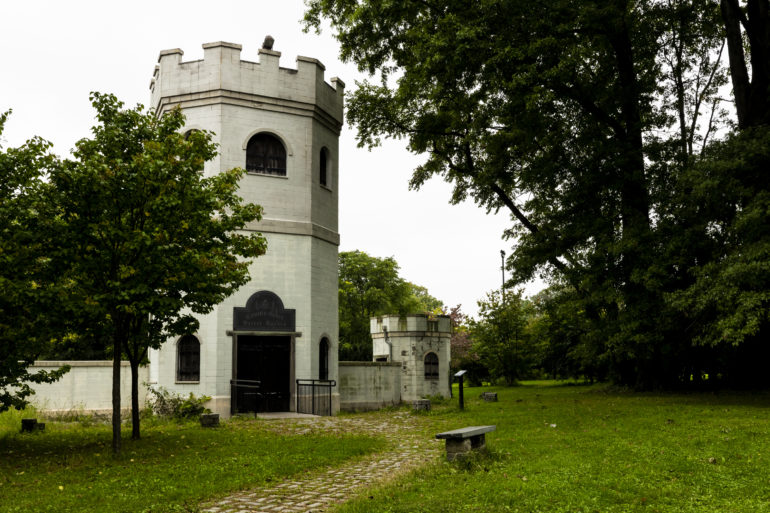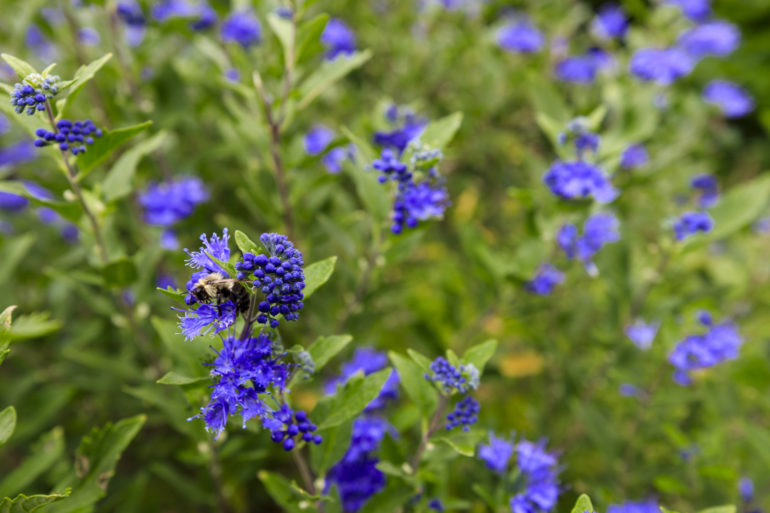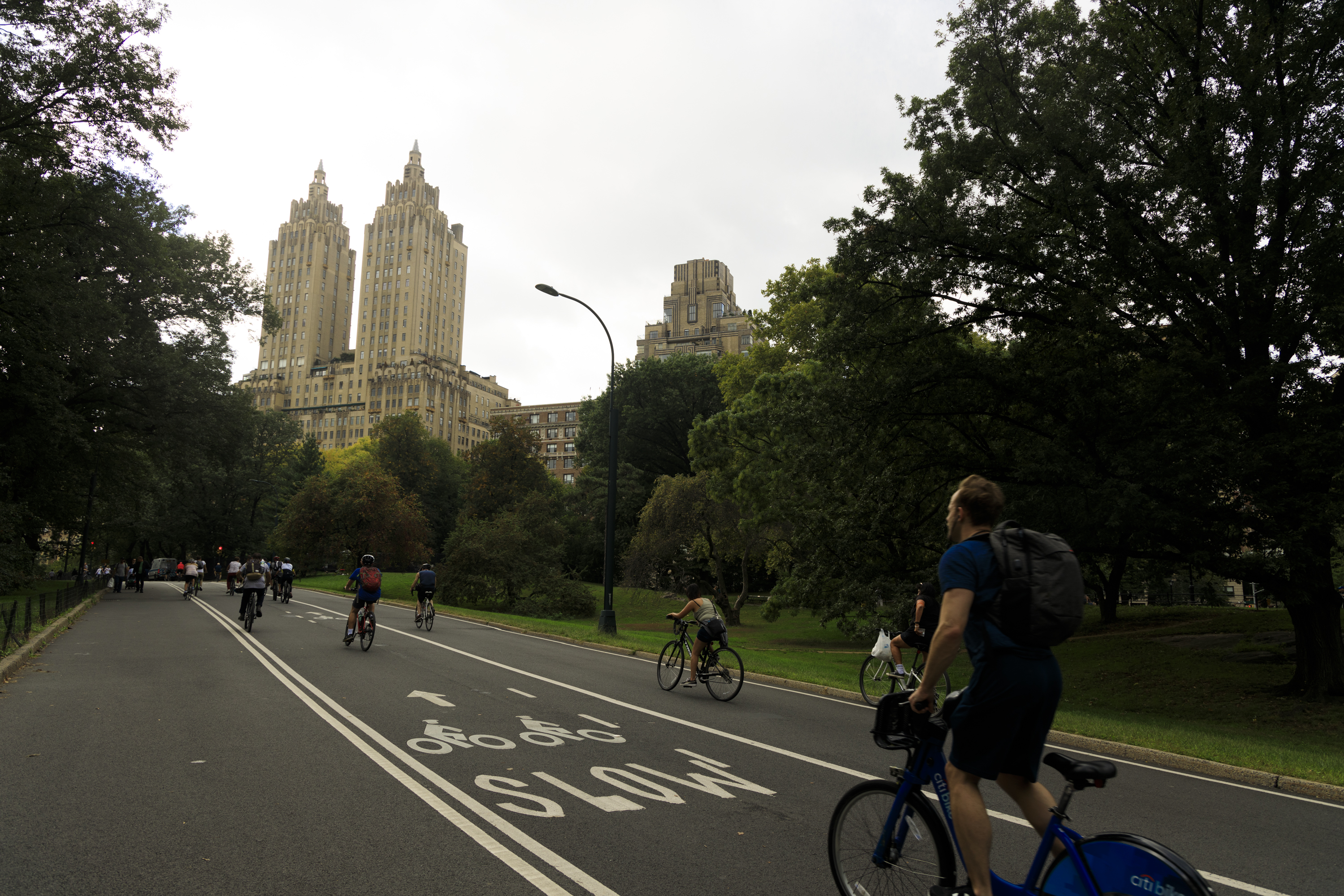Last Updated on 01/27/2019 by Chris Gampat
FOLKS, WE FINALLY HAVE THE CANON EOS R SYSTEM!!
I’ve been using the Canon EOS R system for a number of months now here in NYC. For the photographer with lots of Canon glass or the photographer still trying to make the leap to mirrorless, the Canon EOS R system has proven to me that it is highly capable of meeting and exceeding the needs most travel photographers have. As a busy Editor in Chief, my job often takes me around the world, but I think any fellow native New Yorker can agree with me: you can always feel like a tourist in your own city. New York’s neighborhoods tend to go through changes about every six months in some way or another, and what better way to scrapbook your travels than with some of the best lenses available to a mirrorless camera system? The Canon EOS R system was designed first and foremost around the lenses (arguably the most important part of any camera system).
So if you plan on making it into our beautiful city during your travels, please do take this guide to heart and consider the words of a native who can say he’s explored every part of this city with the curiosity of a child.
Editor’s Note: This blog post is sponsored by Canon.
Manhattan: Using the Canon RF 24-105mm F4 L IS USM Lens
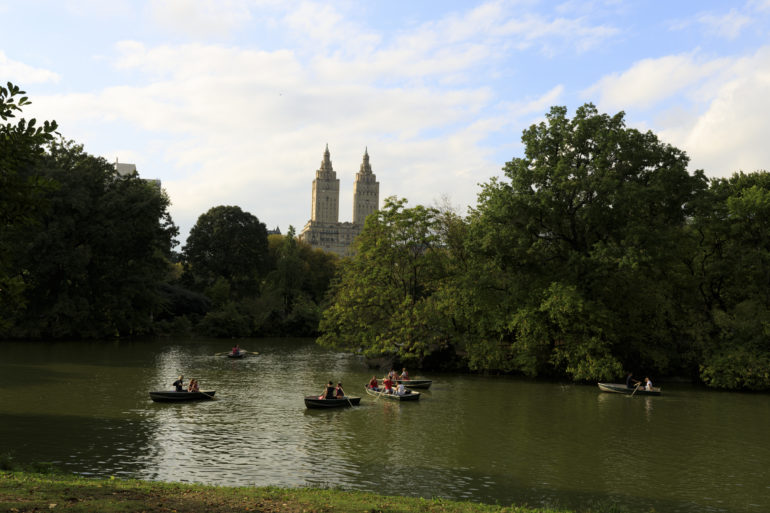
Let’s start in Manhattan, with Central Park, where your journey is best suited to the Canon EOS R camera being used with the Canon RF 24-105mm f4 L IS USM lens. This lens allows a photographer to photowalk during the day with image stabilization. During our tests, we were able to shoot with the lens and camera down to 1/15th (of course our results may be different than yours).
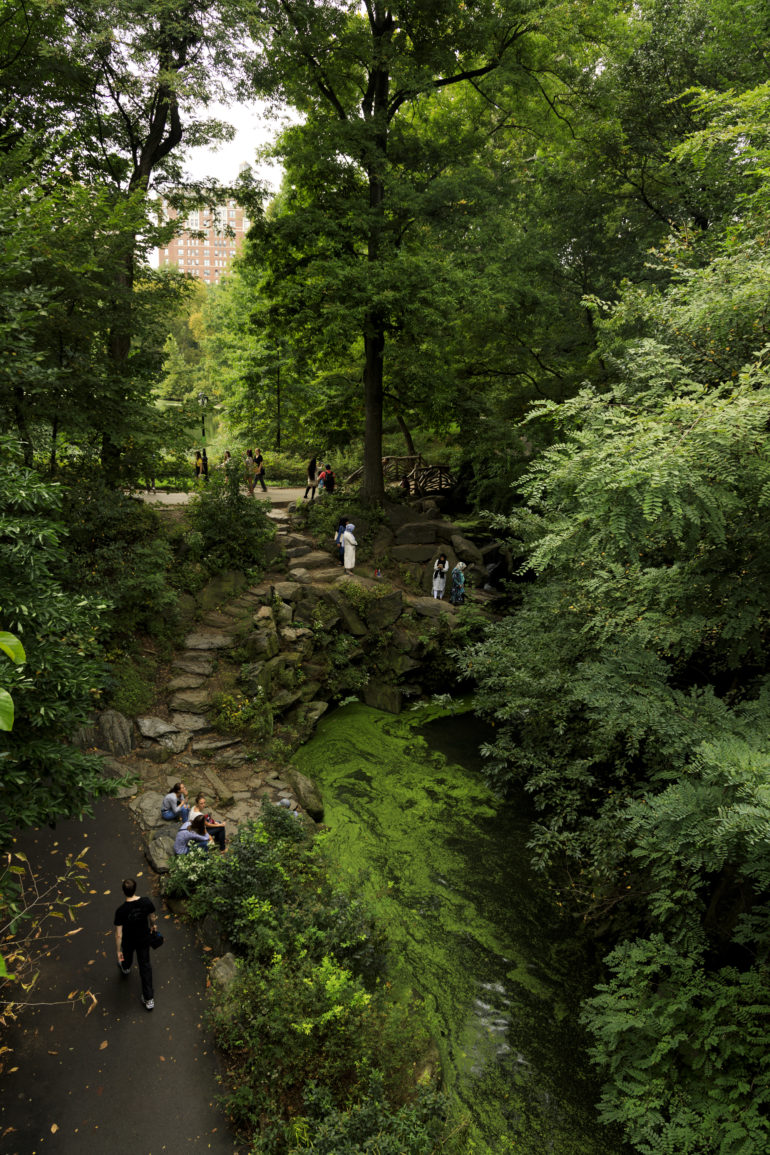
A cool fact: we’re told by Canon’s technical representatives that data from the camera’s sensor works with the lens to try to stabilize your image the best it can. A lens like this also gives you the ability to photograph some of the scenic views Central Park offers. On top of that, you can count on it to be weather sealed (perfect for capturing the very ominous clouds over NYC at times) and it has very fast focusing.
Some of our favorite spots to shoot in Central Park:
- The Minton Tile Ceiling: A very popular place for portrait sessions and engagements due to how the natural light seeps in and blends with the tonality of the tiles. Using the Canon EOS R camera’s Face Detection feature in combination with its Eye focusing will help you snap portraits with just the right balance of contrast, shadows, and light. While Canon’s Automatic White Balance feature is great, I personally like shooting with my white balance locked to daylight here to embrace the warm tones. Give it a try!
- The Lake: In the winter, a fresh snowfall around here can drop your jaw, and the Canon RF 24-105mm f4 L IS USM lens is wide enough to balance the lake, the landscape that is NYC’s gorgeous architecture, and just the right amount of sky. The bridge by the lake is also a popular place for portraits.
- Strawberry Fields: For fans of the Beatles, this place is a Mecca. Consider it a hidden gem surrounded by some of the tallest trees in the park and sometimes a place for quiet contemplation.
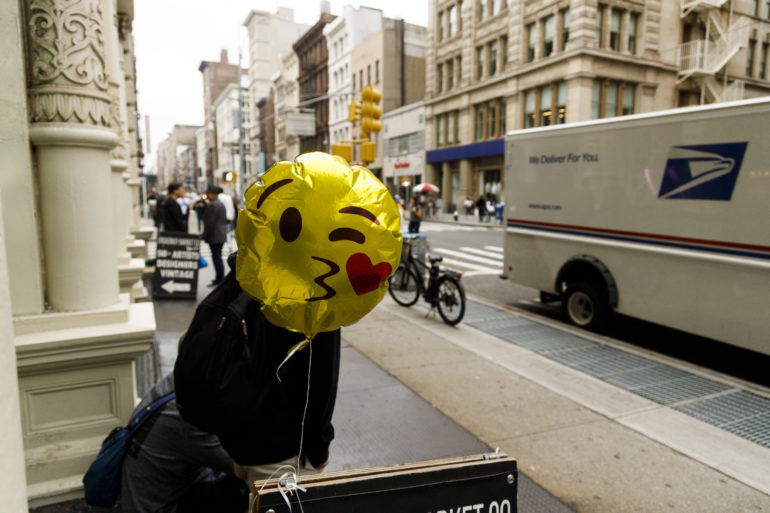
While Central Park has so much to offer, some photographers want something a bit more dynamic. So we also recommend using the Canon EOS R camera’s wide area autofocusing ability while strolling down Broadway below 14th Street. What’s so special about Broadway? Below 14th Street is a hub for lots of shops, restaurants, etc. where folks come to shop and gather. For street photographers in NYC, it’s a prime location for capturing candids of couples in love and random happenings. There are many buildings that are just tall enough to let light seep onto the streets and let you shoot at ISO 400, f8, and 1/500th usually. This, combined with the wide area autofocus that the Canon EOS R camera allows, and anywhere from 24mm-50mm on the Canon RF 24-105mm f4 L IS USM lens will let you capture anything.
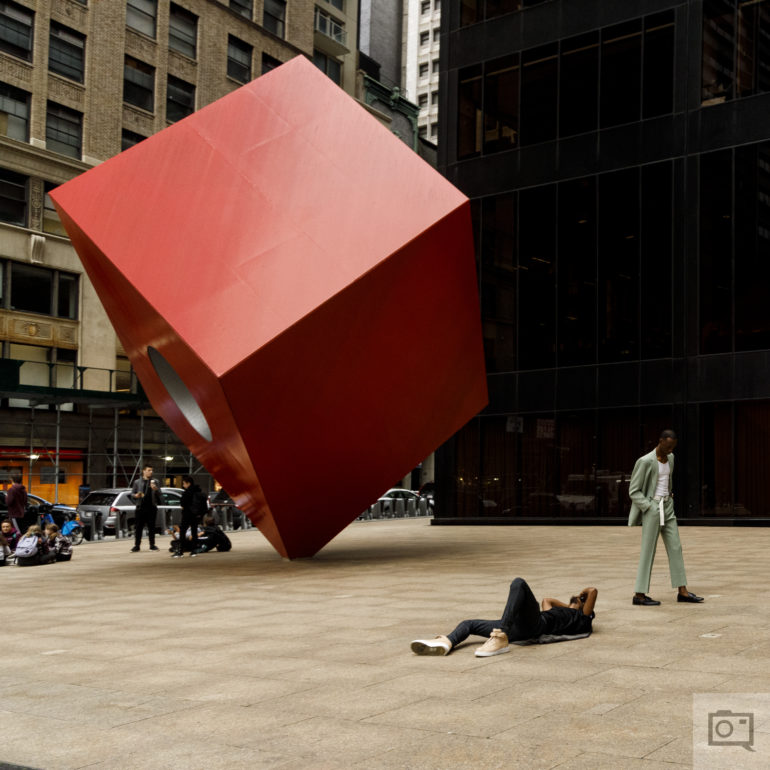
As you walk down Broadway you’ll see a steady change in the architecture and the neighborhood. You’ll start with shorter buildings until you go all the way down near the Staten Island Ferry to find the big, glass buildings of the Financial District, Battery Park, etc.
The Streets of Bushwick: A Portrait Photographer’s Paradise
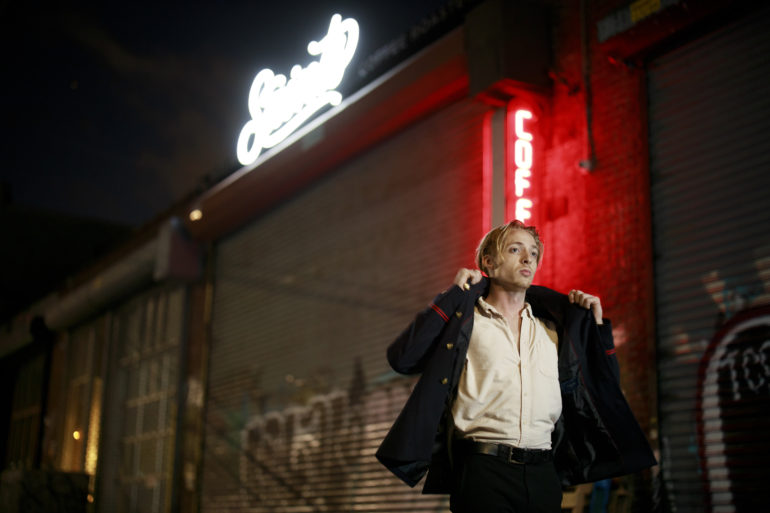
Bushwick: a neighborhood that for many years was incredibly scary until the communities worked to clean it up. Then the artists came, and then it became cool–so cool that it has its own yearly Open Studios where folks can walk around and take tours of the various art studios that have popped up over the years. Along the way to these studios, you’ll see the natural evolution of New York’s graffiti scene in the form of full street art. Combine this with the way the light bounces off of the buildings and the natural variety of color, and you’ll understand why the rent is so expensive here! For portrait photographers looking for that cool neon look, there’s a lot of it to be found here.
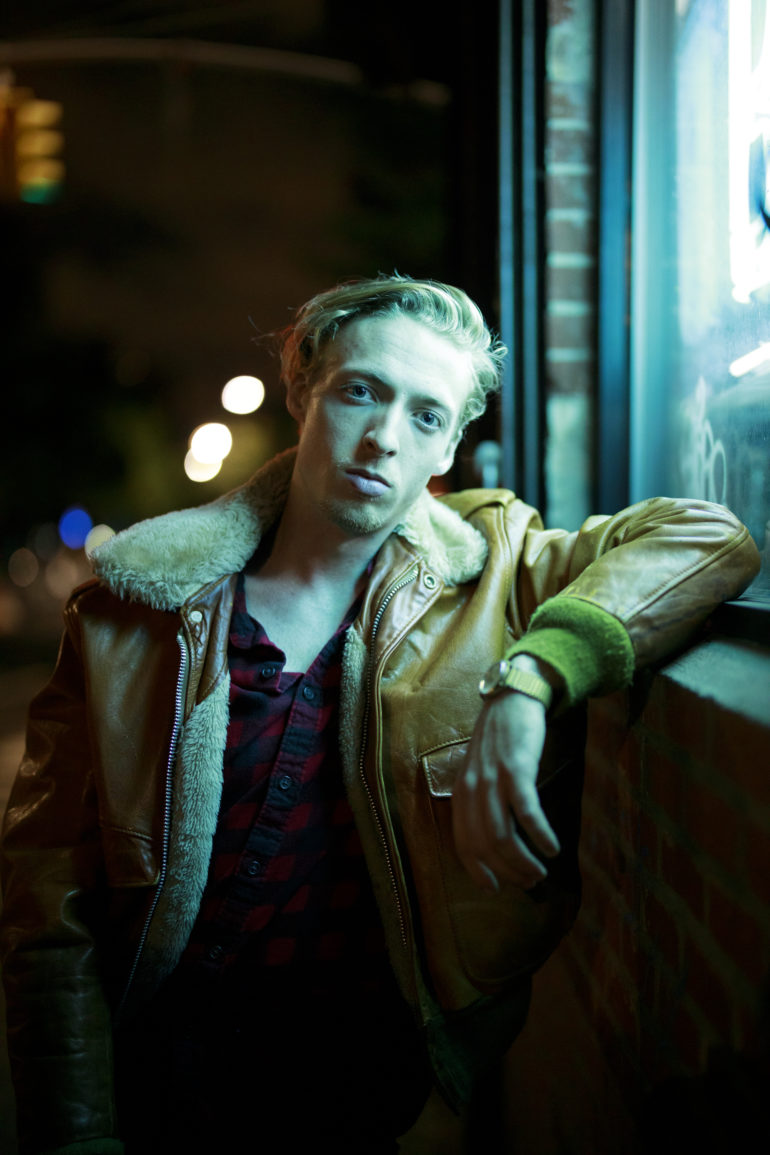
But bring along the Canon RF 50mm f1.2 L USM lens and you’ll see why. Considering what this focal length is: I’ll say with total honesty that it delivers a look that seems almost like that of a medium format camera/lens combination. Just imagine: that 645 format look on 35mm full frame combined with better autofocus, and Canon’s color science when it comes to skin tonality. Then mix that in with a plethora of talent available to photograph in Bushwick and the fact that in the colder months, NYC’s Golden Hour tends to last for a few hours.
What else makes Bushwick so great for portraiture?
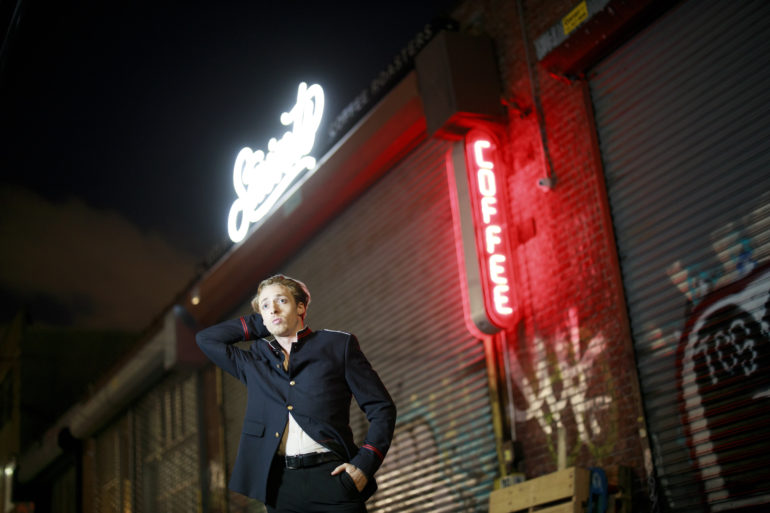
- Everyone is doing it! We’ve got warehouses, studios, art work, and loads of low traffic streets where photographers can take full advantage of shooting in public–one of the many privileges of artists living in the city.
- More bars, bodegas, delis, and restaurants than you can think of to give your subjects some unique lighting naturally. All while out in public!
- A large number of concert venues that makes for great places to photograph bands, musicians, etc. Combine this with the Canon EOS R camera’s fast focusing abilities and the Canon RF 50mm f1.2 L USM lens’ ability to isolate a subject with ease in super low-lit situations and you’ve got yourself a winner.
Here are some tips on doing portraiture when working with such a shallow depth of field:
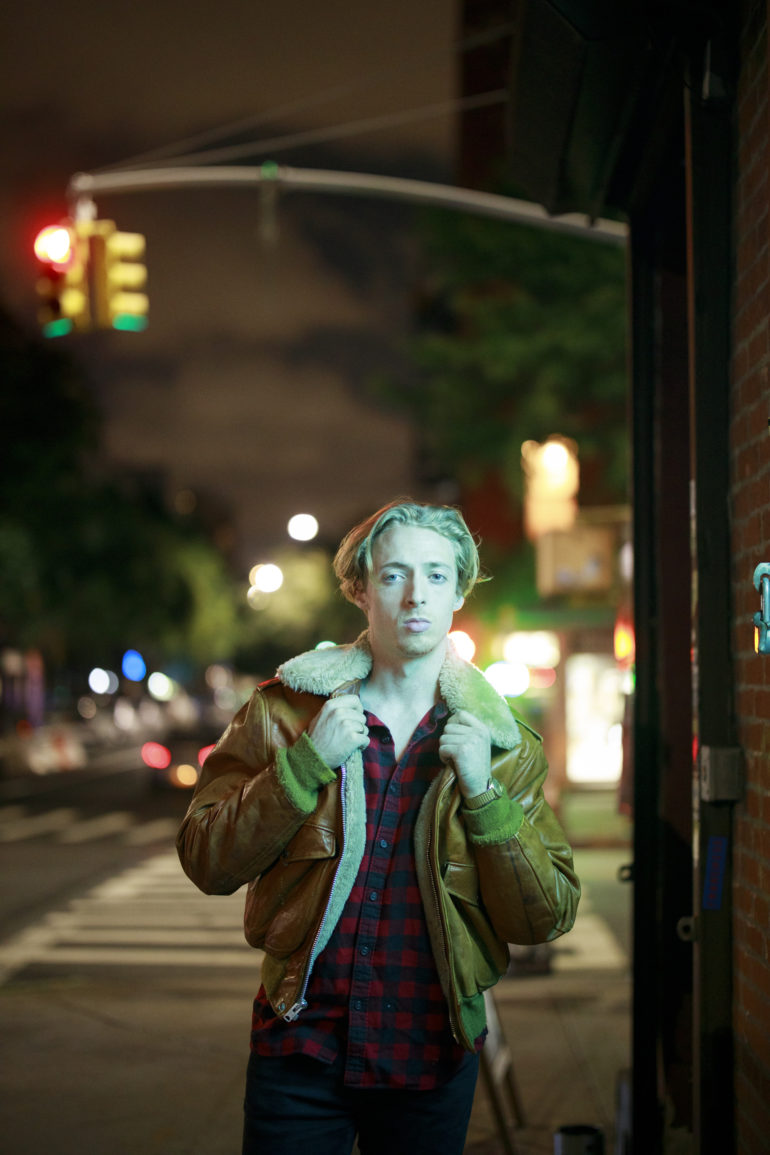
- Shoot wide open unless you need to stop down. The point of a 50mm f1.2 lens is to take advantage of the bokeh.
- If Face detection and eye focus aren’t cutting it for the way you shoot, switch to choosing a single focusing point.
- There is no point in focusing and recomposing the way many photographers have done with Canon’s EF 50mm f1.2L USM lens. Instead, compose your scene and go right for the focusing point.
- After each shot, ask your model to change up their pose just a bit.
- You can get up close and personal with this lens due to the lack of distortion, or you can shoot a tad further away. Personally, I like it for portraits from the knees up. Getting your subject in focus and then blowing out the background is simply beautiful.
The Long Island City Waterfront Is a Magical Place
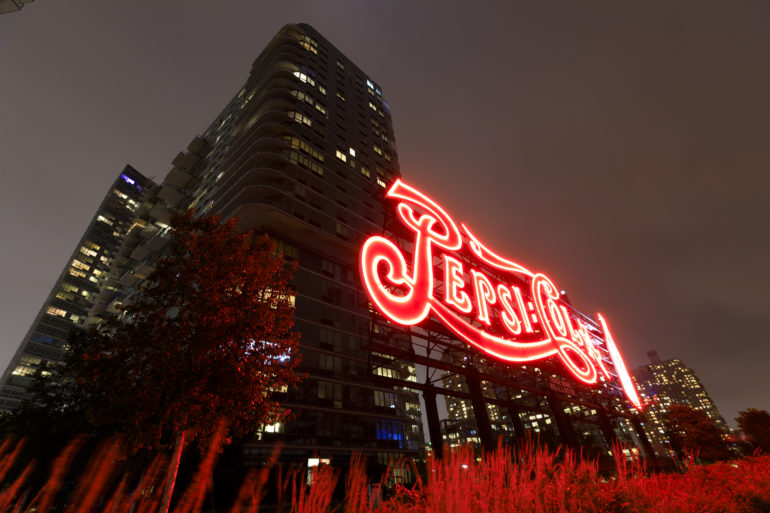
Queens doesn’t make all the popular listicles on the web very often, but the borough of my birth (and hopeful return, eventually) is a place that will naturally feel like your next home, not only artistically, but socially. Case in point: the Long Island City waterfront is home to some very iconic scenes in NYC. This waterfront area is home to lots of greenery, dog parks, interesting boardwalks, cleverly designed furniture, spot lights that both illuminate paths and provide a cinematic look to anything around, etc. During the day, it’s perfect for the Canon RF 24-105mm f4 L IS USM lens. At night, the Canon RF 28-70mm f2 L USM lens, Canon RF 35mm f1.8 MACRO IS STM lens, and the Canon RF 50mm f1.2 L USM lens will help you get all the beautiful images you’re worthy of as a photographer.
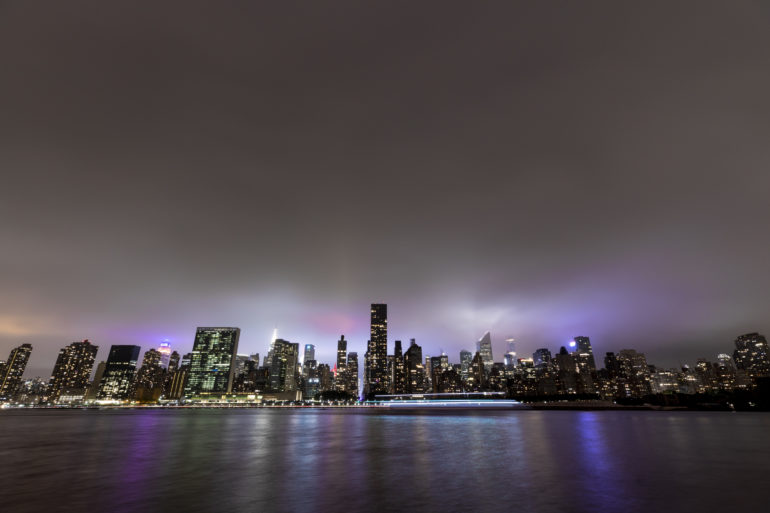
One of my biggest recommendations: bring a tripod and get there before sunset or sunrise. During sunset, the sun comes down behind Manhattan and the scene becomes naturally illuminated by the street lamps to the east, and the city lights and golden light to the west. Long exposures can also help deliver that super smooth look to the water, emphasize dramatic movements in the clouds, and provide you with tons of unique perspectives.
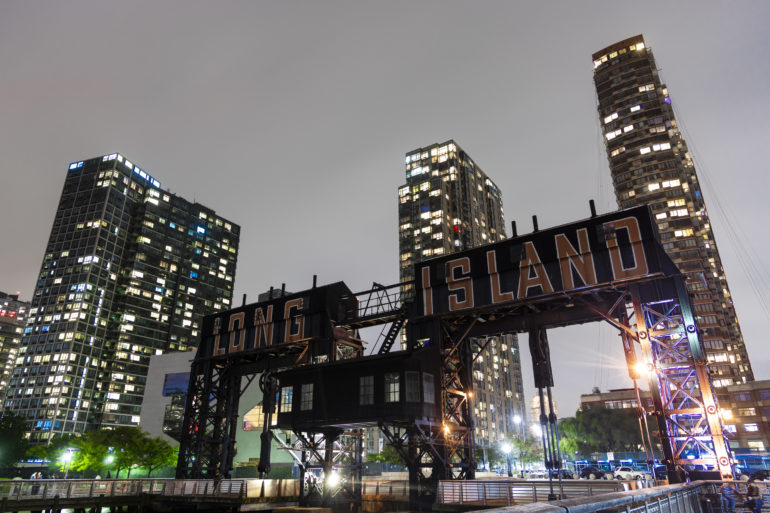
New York typically has a law against using tripods, but in park areas like the waterfront, the police will typically not give you any problems unless you’re in a high traffic zone and not using common sense. To that end, if you’re on the boardwalk and photographing the city in a long exposure, they’ll probably come by and talk to you more about how cool that image is. (And wonder how they can get it with their phone!)
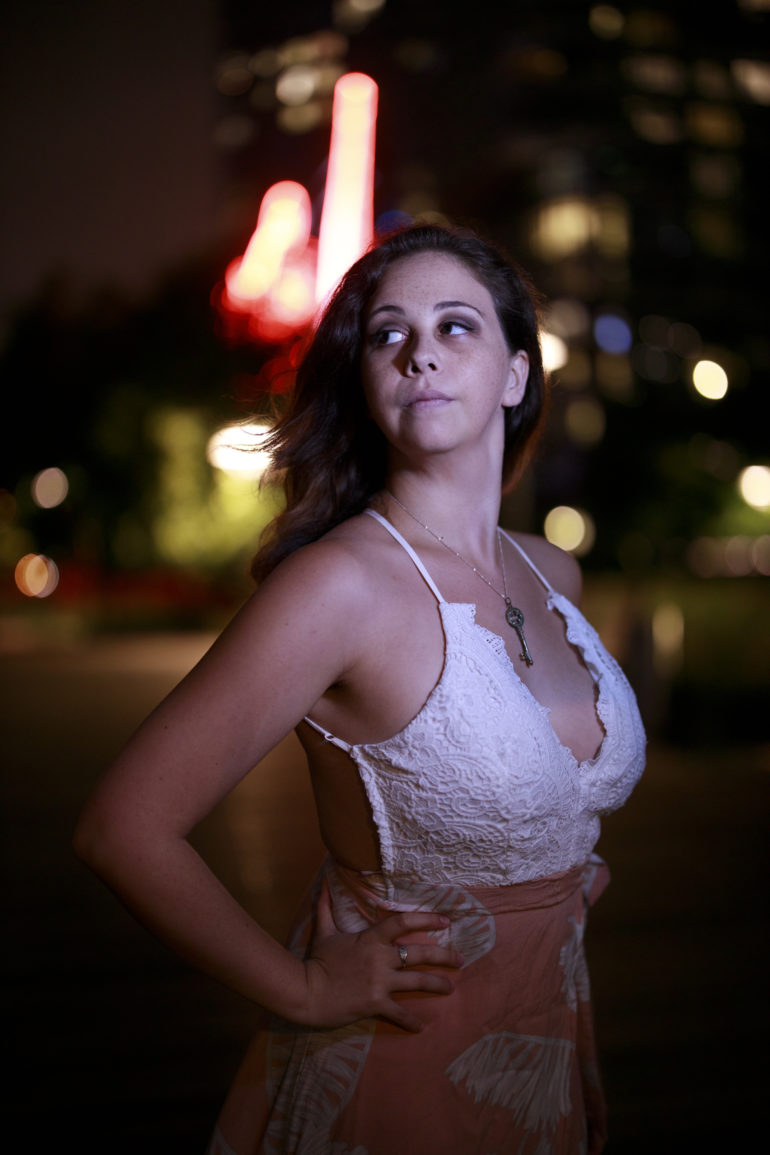
Pro Tip: The boardwalks in Long Island City have a very film noir look to them. So try shooting in RAW/JPEG and using the Canon EOS R camera’s monochrome shooting mode. Combine this with the company’s fast aperture lenses and just the right amount of light and you’ll earn yourself a portrait photo well worth your portfolio.
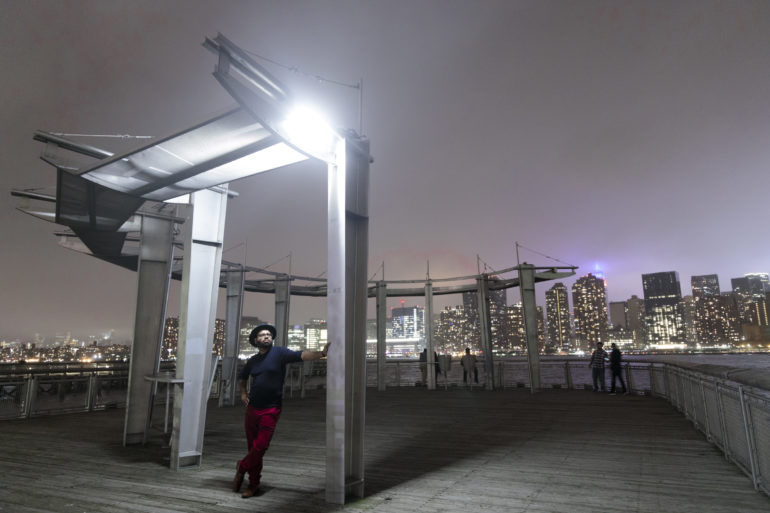
Long Island City is also a fantastic place to photograph dancers! Ballet, jazz, you name it! The Canon EOS R camera lends itself well to this with its vertical or horizontal zone focusing combined with Servo tracking. Even with a lens like the Canon RF 50mm f1.2 L USM, you’ll get sharp results.
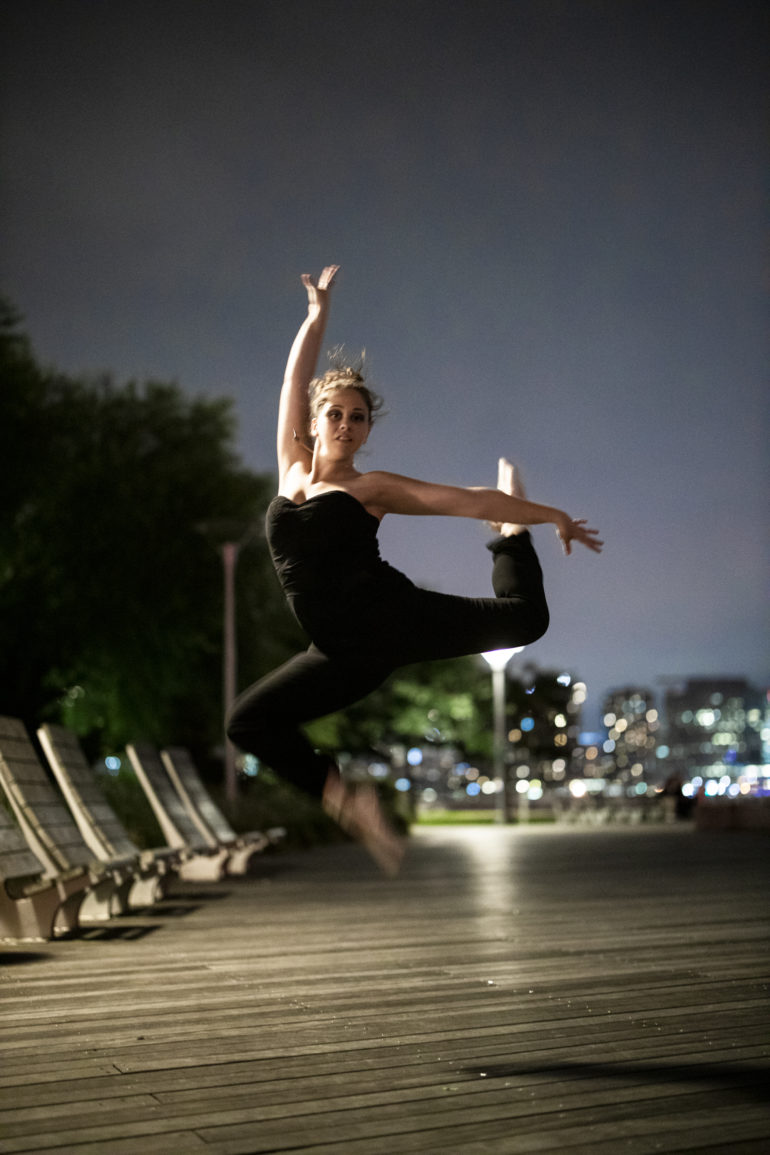
Oh, and of all the places, Long Island City is my favorite.
Don’t Tell Anyone: But This Area of the Bronx Is Meditative
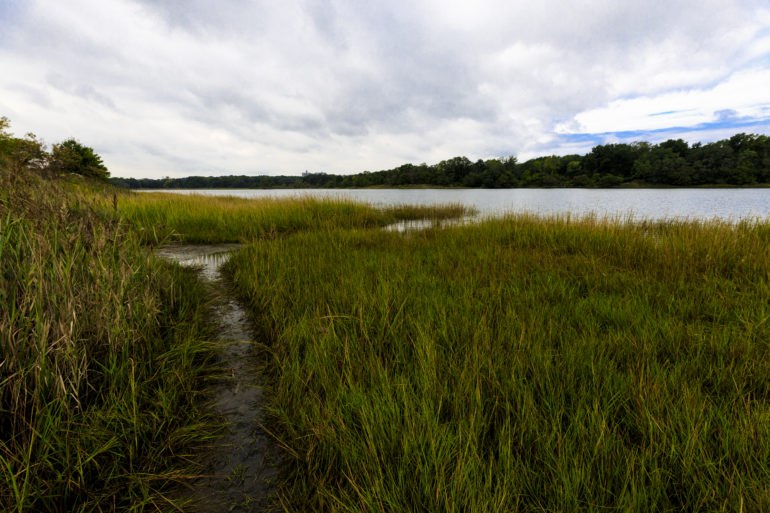
Growing up, the Bronx was a place where many people didn’t want to go. It was rough. But NYC has changed. There’s a place in the Bronx where you can really forget that you’re even in NYC, and that place is Pelham Bay Park. Walk around the park and you’ll get the feeling that you’re somewhere in California or the Pacific Northwest. Like all good places for landscape photography, it works in layers of water, marshland, greenery, skies, etc. Get there early enough and you’ll find other New Yorkers fishing, hiking, throwing BBQs, and more.
On your journey to this section of the Bronx, I strongly recommend bringing with you a variety of zoom lenses:
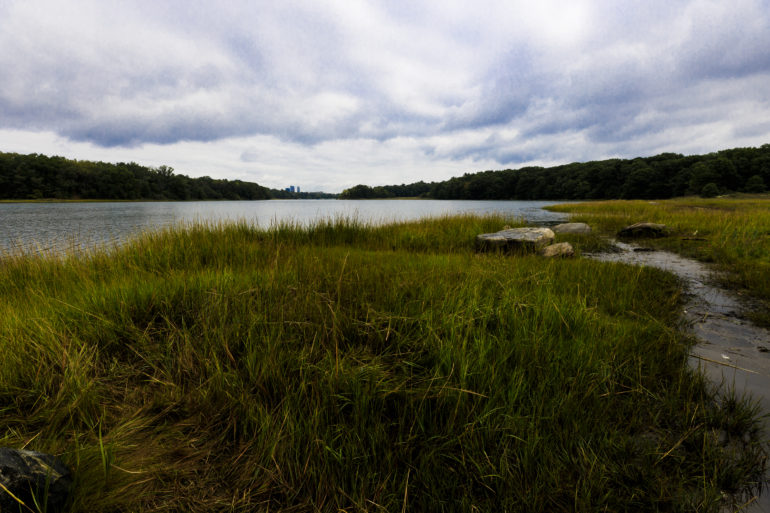
- Canon RF 24-105mm f4 L IS USM. This lens will be your best, general purpose lens for the variety of landscapes and areas.
- Canon EF 16-35mm f2.8L III USM: A wide angle and fast aperture lens will let you work even better with all the layers of sky, water, wetland, and grass. For even more fun, use Canon’s black and white JPEG mode in addition to shooting Canon .CR3 RAW files.
- Canon EF 70-200mm f4 L IS II USM: This lightweight lens is one of our favorites to use when it comes to capturing wildlife and such.
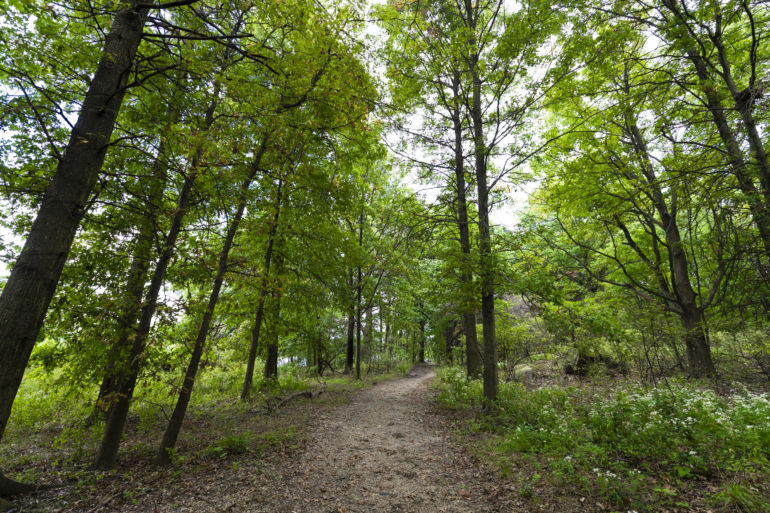
Just beyond Orchard Beach, Pelham Bay Park has small hiking grounds (we recommend you bring some comfortable, waterproof hiking shoes in addition to a rugged backpack). You’re going to be doing a whole lot of walking. The area provides you not only with landscapes but lots of wildlife. We even came upon a deer! My favorite thing to do is to go on an overcast day when the clouds are in the sky. And don’t worry, the Canon EOS R system and the weather sealed L lenses can surely take much of what Mother Nature throws at it.
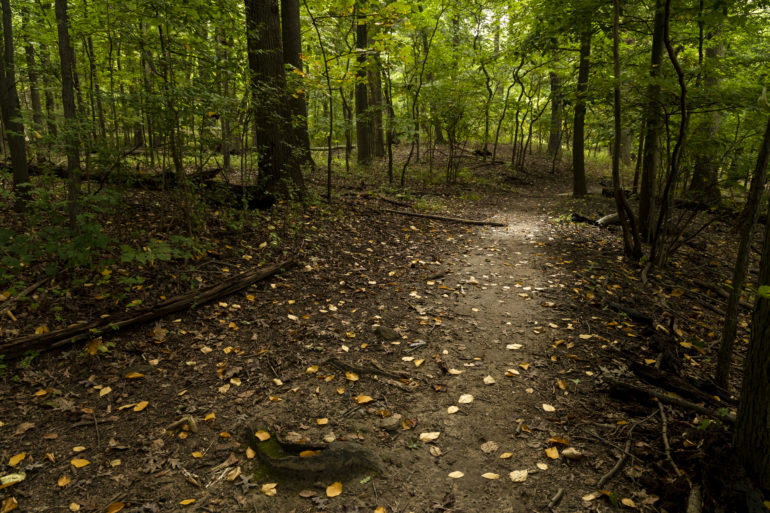
In fact, if the weather starts to come down then you can easily create some gorgeous almost apocalyptic scenes NYC has been known for. Our clouds can be very fierce looking.
Best of all, you can go here and even forget that you’re in NYC. For the most striking results go at night and affix the Canon RF 50mm f1.2 L USM lens to your Canon EOS R camera.
Oh, and bring bug spray!
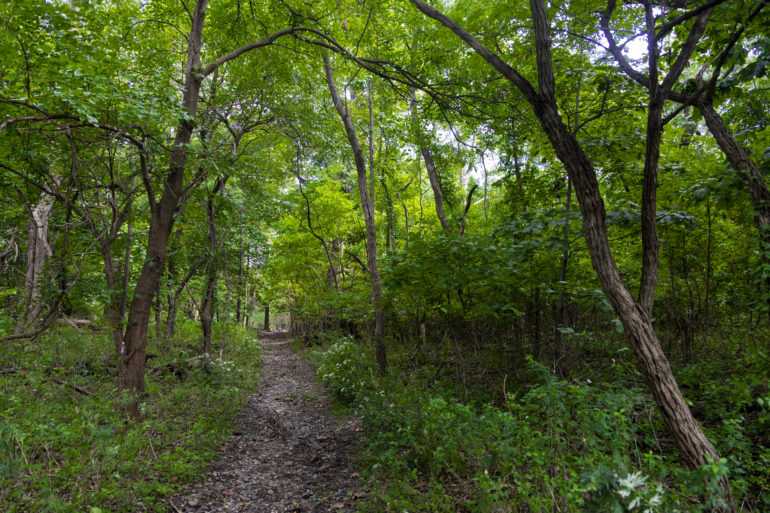
The Beautiful Gardens of Staten Island
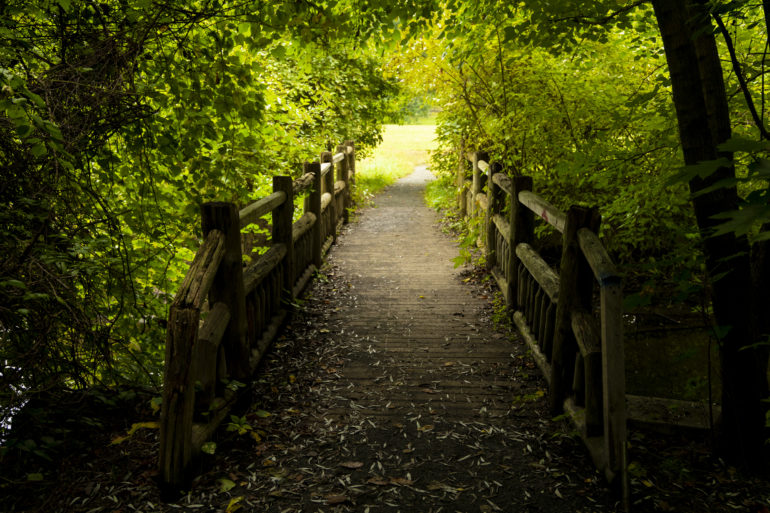
While Staten Island tends to get made fun of a lot by other New Yorkers, visitors and those who reside here will be pleasantly treated to one of the most serene places in all the five boroughs of NYC. Walk around and you’ll find carefully managed grounds designed to attract butterflies, gardens created in memorial to 9/11 victims, and a number of places that are bound to give you creative and fun ideas. You’ll even find architectural inspired by the Secret Garden!
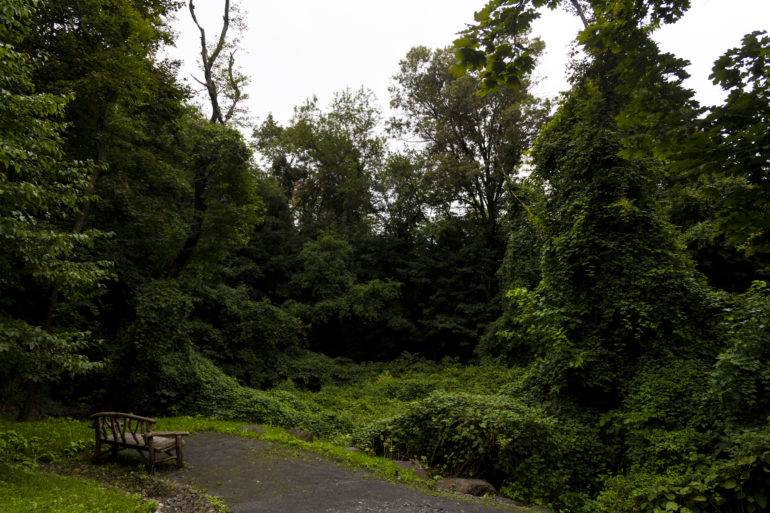
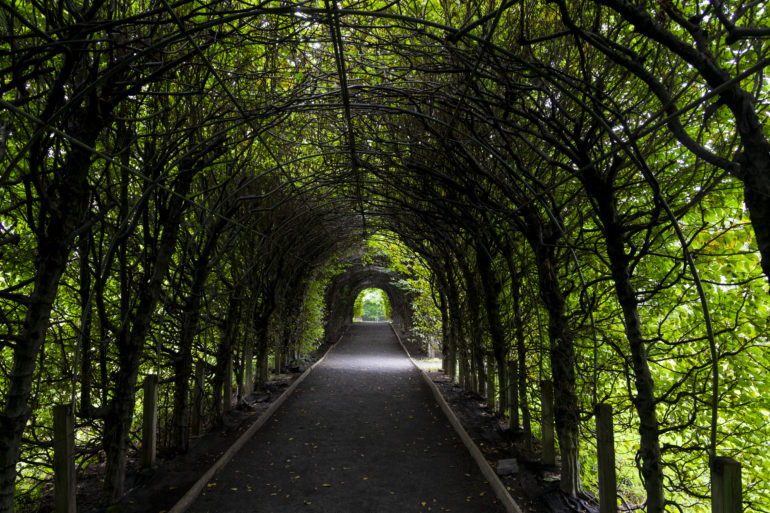
This place is best for landscape photographers and for all those who want to be a bit more creative with their locations while not leaving the five boroughs. When using the Canon EOS R system and lenses like the Canon EF 16-35mm f/2.8L IS III USM with an adapter like the Canon Control Ring Mount Adapter EF-EOS R, set the camera’s autofocus to the widest area setting. That way, you’ll be able to take in the grand scenes. It’s also a great place to photograph things like bees and other insects. But most of all, it’s proof that you can find almost anything in NYC.
